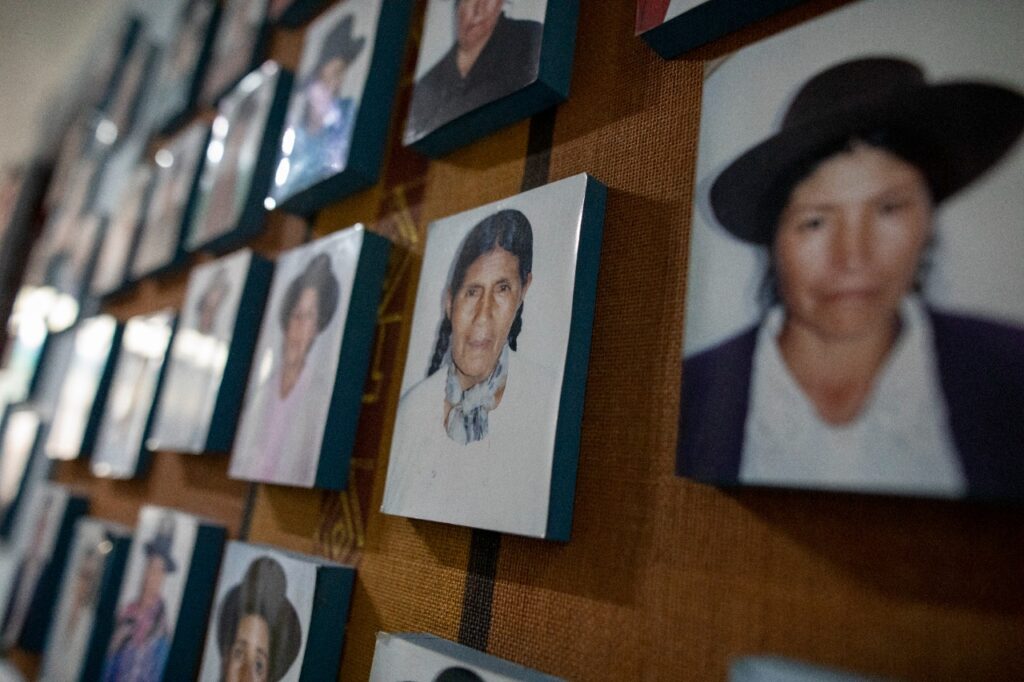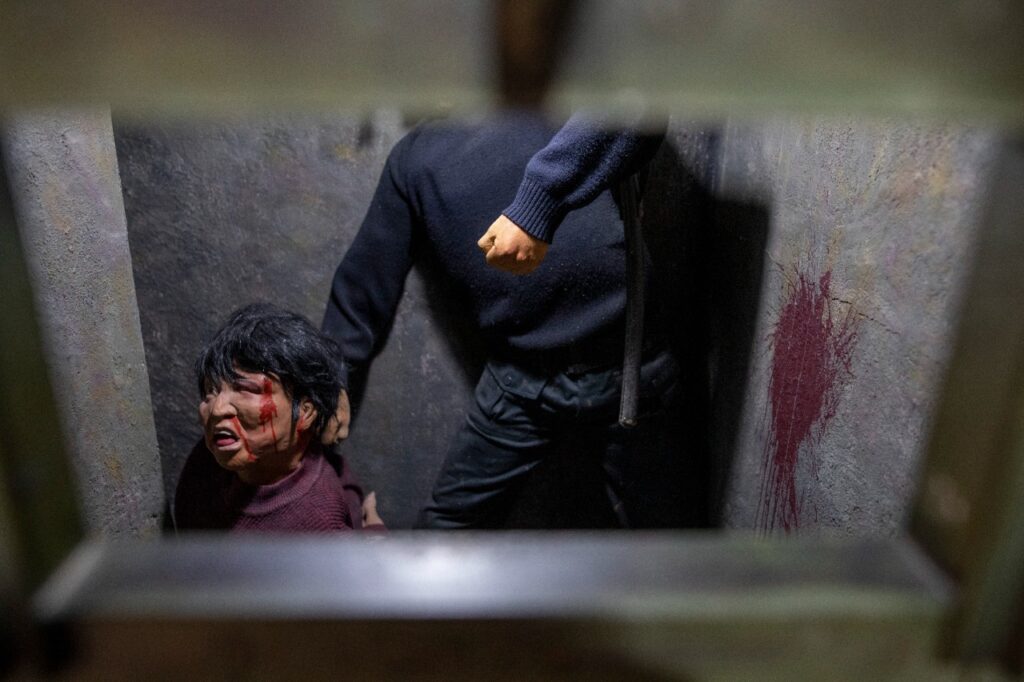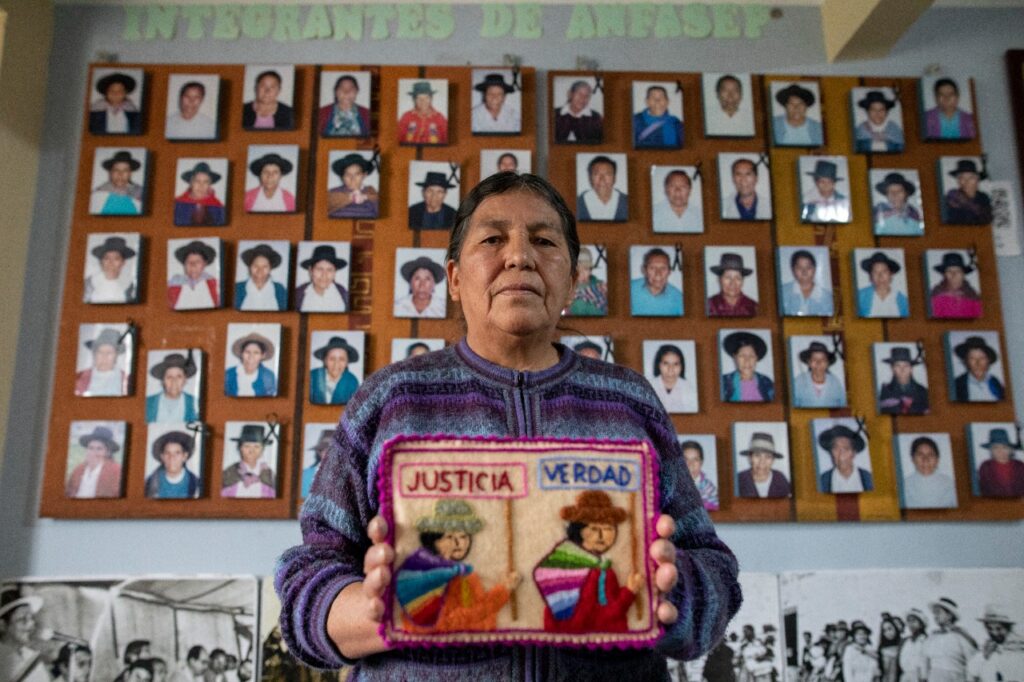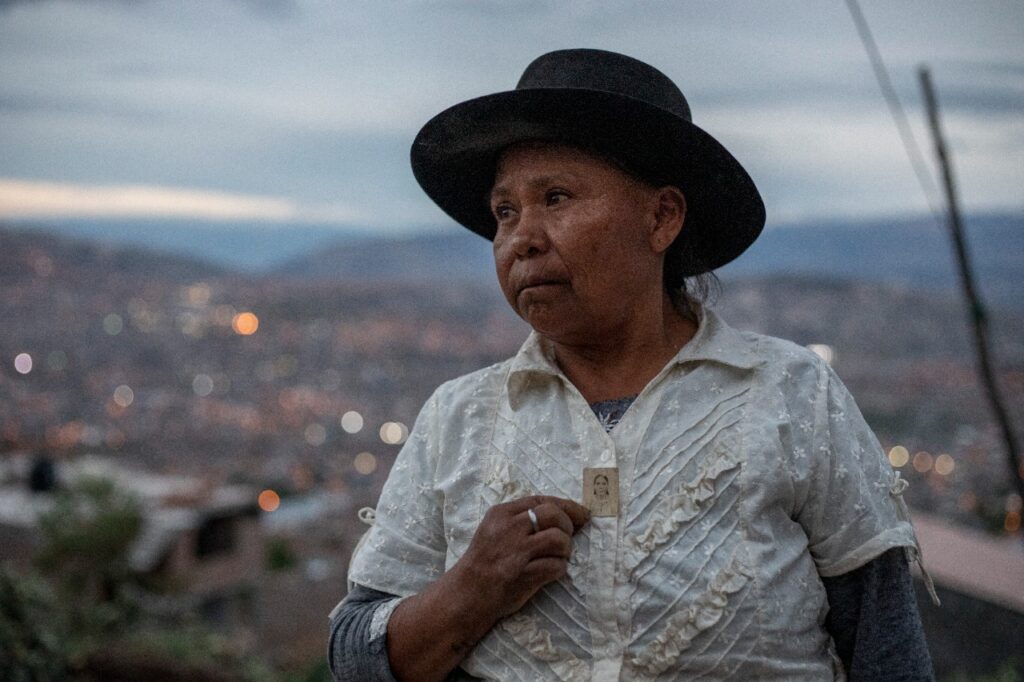40 years after the violent repression in Ayacucho, the "corner of the dead" in Peru, the military once again leaves dead in its streets. Time passed but the stigma did not.
By Ingrid Sanchez.
Photos: Miguel Gutierrez. Video: Candy Sotomayor
"Here nobody listens to us, nobody is going to listen to us."
It was the claim of victims of military repression in Ayacucho, Peru, to the delegation of the Inter-American Commission on Human Rights ?IACHR? who recently visited this department.
The reproach had the tone of pain revived by the soldiers who, stomping their feet, toured Ayacucho once more. The last time they fired on the population was almost 40 years ago, during the internal armed conflict that left, according to the Truth and Reconciliation Commission, around 70,000 dead.

On December 15, the Army once again left streets covered with the dead in its wake.
In the meeting with the IACHR, it was denounced that the dissolution of the social mobilizations at the end of December was extremely violent, with the use of weapons of war at will, shooting to kill, which reflects the violent death of the 10 victims and the large number of wounded.
The government of Dina Boluarte, who assumed the presidency on December 7 after the dismissal of Pedro Castillo, focused the repression in Ayacucho? "corner of the dead" in Quechua?; The contempt that was dormant within the State against this region of the Andean highlands was reactivated after the relative tranquility that existed with Castillo Terrones.
Lima looks at Ayacucho with suspicion. People who migrate to the Peruvian capital from this region are not welcome.
For the people of Lima, they carry the stigma of "terrorists", an appellation endorsed not only by those who were active in the ranks of the Communist Party of Peru-Sendero Luminoso -PCP-SL-, an organization outlawed from word to memory, during the internal conflict. It extends to those who are "suspicious" or originating from regions where the communists had influence.
On December 15, Ayacucho joined the strike called by several regions of the country in demand for a Constituent Assembly that drafts a New Constitution, and the cessation of the repression that has already been presented in southern Peru such as Andahuaylas or Cusco.

The callers for the strike asked the people of Ayacucho to take the Alfredo Mendívil Duarte National Airport. They knew that the ships loaded with soldiers would leave from there with fixed bayonets and headed south.
The Ayacucho people did not hesitate and took the terminal. Hours later, the State responded with all its force: for five hours the bullets whistled in the Alfredo Médívil. After approximately 5:00 in the afternoon, the persecution of the demonstrators began among the surrounding neighborhoods.
The impacts of the bullets are the silent witness of the violence of the Boluarte government.
Where there were falls, the ground is a little cleaner than around it. The bereaved washed with holy water the blood of their husbands, children, brothers, nephews or grandchildren.
Despite the bloodshed and pain, the families will not remain silent and have formed the Association of Families of the Murdered and Injured. They began the tortuous fight for justice.
Perhaps that historical combativeness and strength of the Ayacucho people is the reason that inflames the economic and political elites, and the current State to mercilessly attack the region. It doesn't matter if it's the 19th, 20th or 21st century. The repression is the same.
"I have found your clothes, their little skulls»
«Then I found. My husband has disappeared on July 17, but I found on August 15. But thus searching, I have found their clothes, their skulls, their bones, what has been left over from the dogs ».
The testimony is from "Mama Lidia" who speaks before her husband's holed shirt, sheltered in the Ayacucho Museum of Memory; Her story sounds current, but it goes back to 1984, when her partner was murdered by the military.
"Mama Lidia" explains ?while inserting a finger into one of the holes in the last garment her husband wore? who found his body abandoned in a river. He relives that in addition to the decomposition, his remains had perhaps been outraged by dogs or the local fauna.
With his strong Quechua accent, he tells that Huamán was arrested outside his house and later assassinated for not carrying his National Identity Document "DNI".
This woman, with her traditional dress, her black hair braided and wiping away the tears that flow from the memory of her husband, is the president of the National Association of Relatives of the Kidnapped, Detained and Disappeared of Peru ?Anfasep? which since 1982 focuses on the recovery and identification of victims of violence in the internal armed conflict and justice for families.

«They told me, ?On this street there are dead. In this other street, there are enough deaths? That's where I found my husband," Lidia explains, recalling the response of the authorities at the time.
The Ayacucho Prosecutor's Office refused to collect the body because "the judge is busy" so she returned to the river, collected the remains in a sheet and deposited them on the judge's table with the claim of lack of help.
With the integrity of his people, he took Huamán and buried him, after which he began his militancy in Anfasep with the intention of finding the culprits.
Lidia is a case of "success" in the search for relatives as she found the remains of her partner. Others have not heard from their husbands, mothers, brothers or children for 40 years. Now, the violent repression of December 15 opened several wounds among some members of the Association. The horror of violence fueled the pain of being victims.
Like that of Paula Aguilar, a woman who does not speak Spanish. In Quechua, he explains that his mother and brother were disappeared by the Army in the 1980s and he has not found them. Now, his great-nephew was one of 10 people killed by the military on December 15.

José Luis Aguilar was returning from work when he ran into military persecution in the neighborhoods surrounding the airport. He tried to hide, but a bullet hit him at a crossroads. He put his hand to his head and vanished; another young man dragged him to a sidewalk where he died.
«I feel sad, it is as if I have relived that year that has passed because on that date, the military killed and now it is the same. The military have killed. And that's why I relive what happened in the 80s ».
Paula explains in her native language, Quechua. The linguistic distance of his testimony is not an impediment to perceiving his pain in his tone and gestures.
His biggest concern is the future of José Luis's two-year-old son. Paula emphasizes that in situations like this, the State should give financial compensation to the families of the victims of the repression.
Ayacucho is one of the most marginalized regions of Peru.
To get to Paula's house, in one of the ends of Huamanga ?capital of the department? it is necessary to reach the last stop on a truck route and then ascend for 25 minutes ?through dirt and loose stones? to the top of the hill where he lives.
This marginalization led to the region being the epicenter of the work of the PCP?SL since before the "People's War", the name that the Party gave to the conflict that occurred between 1980 and 1990.
So, the Peruvian State, which ignored Ayacucho from the comfortable center of Lima, did not react to the first military actions of the Communist Party of Peru "Sendero Luminoso" in 1980. Until two years later the Peruvian militia stood up to the Popular Guerrilla Army ?designation that Shining Path gave to its military organization? and horror broke out.
The internal conflict is not the only violent stage that Ayacucho has witnessed. In 1824 the last battle against the Spanish took place, with whose share of blood and pain the independence of what is now Peru was sealed and the Viceroyalty of Peru was buried.
The Quechua-speaking population explains the meaning of the name of the region: Aya is "dead" and k'uchu means "corner or dwelling". Ayacucho, whether in the independence struggle, in the two decades of the "internal conflict" or in the uprising against Dina Boluarte, adds the fallen to the "corner of the dead."
You can watch the video with interviews on the YouTube channel of Peninsula 360 Press.
This article was produced with the support of the organization Global Exchange in collaboration with Peninsula 360 Press.
You may be interested in: Ayacucho: in the eye of the hurricane




